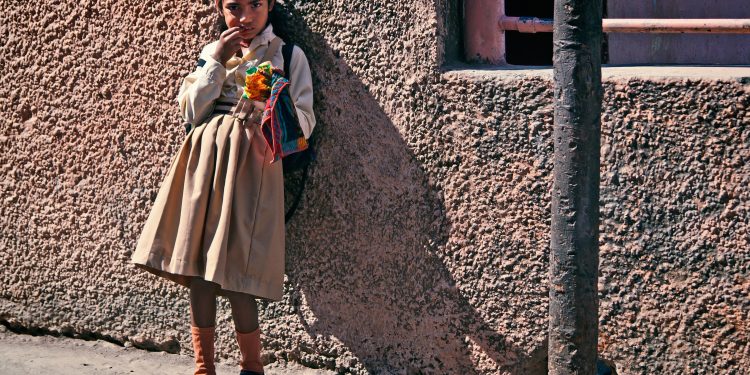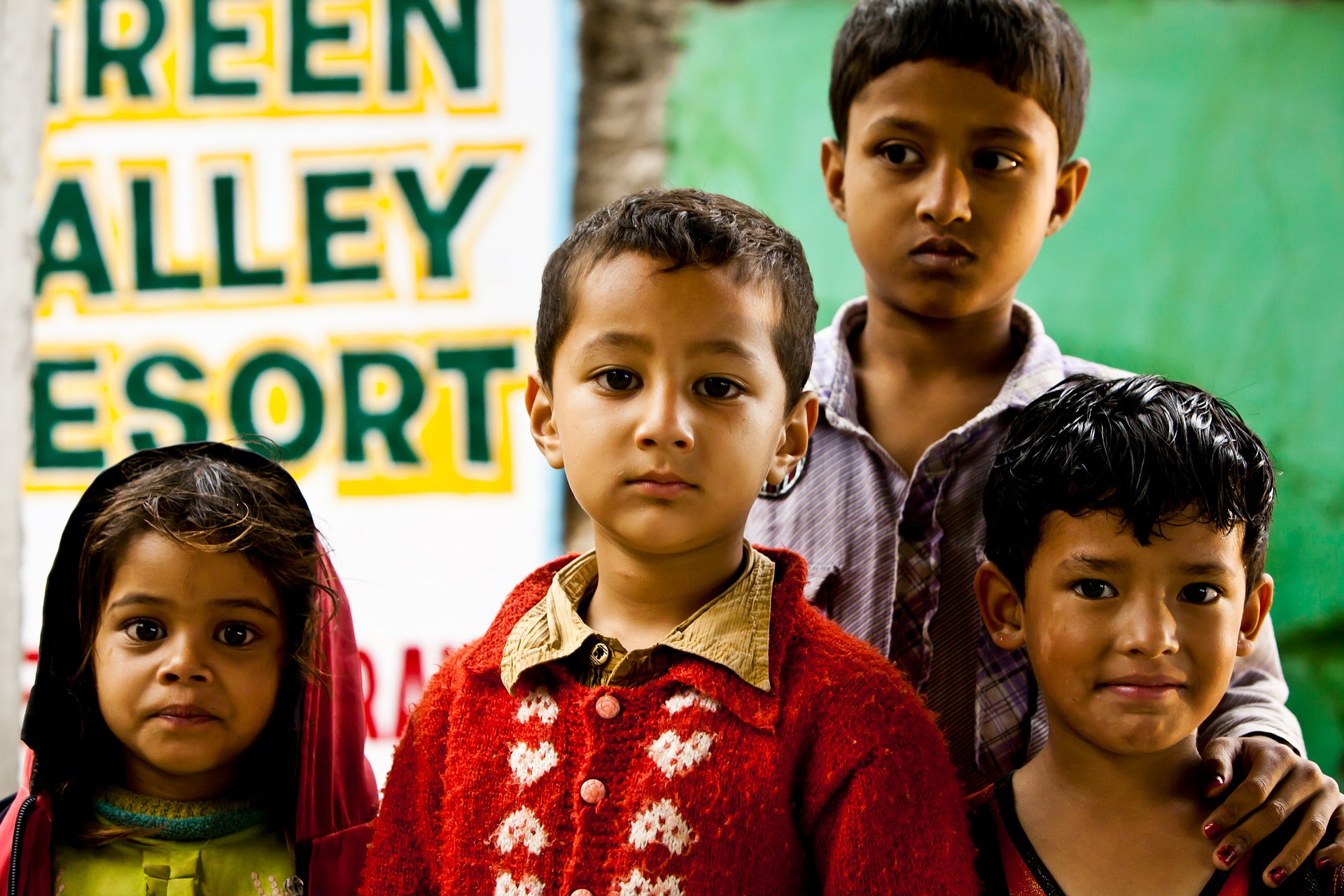Pre-Teens Should Be Carrying Books, Not Babies

Cases of child sexual abuse are indeed a blot on any society. Broadly speaking, the definition of child sexual abuse is not confined merely to rapes, as quite a number of people fail to comprehend. Apart from the act of coercing a child to engage in the sexual acts, it also includes exhibitionism – the act of forcing or persuading a child to exhibit his or her private parts, explicit texting, inappropriate touch, exposure to pornography and making physical contact by encroaching his or her intimate zone.
The Protection of Children from Sexual Offences Act, 2012, defines a ‘child’ as any person below the age of 18 years. Many times, the victim girl child gets impregnated as a result of the sexual intercourse. A number of studies manifest that there is a strong correlation between teen pregnancy and child sexual abuse. About 70% of teenage mothers admitted that they were already sexually abused at a tender age. On average, 16% of young girls were pregnant as a direct result of rape.
Recent Case
A judgment rendered by the Chandigarh district court on July 18 left everyone in dismay, wherein the court rejected a plea of a pregnant 10-year-old rape victim for abortion. The young girl was allegedly raped time and again for over half a year by her maternal uncle. Her mother is a domestic helper working at a government official and her father is a watchman. The family lives in a servant quarter allotted to the mother. Girls at the victim’s age are busy playing with their dolls and colouring their imagination with crayons and pencil colours. The only weight they have to carry is their books and bags, but sadly this little angel is carrying a 27-week old baby. Her level of innocence can be gauged by the fact that she does not, naturally, know what is going on in her life.
The family looks forward to the Supreme Court with hopeful eyes. If the decision against the abortion is upheld, then she would be destined to go through panic attacks for a long time in her social life. It goes without saying that her baby would be looked upon as ‘illegitimate’ and might even suffer a social rejection. Now that the little girl has already come into the limelight, she would too suffer similarly. On knowing that she is going to be a mother of a child just 10 years younger than her, which is not an uncommon gap between siblings, she will be prone to lifelong distress.
Brief Analysis of Judgment
However, despite the fact that the above problems will probably surround her, the decision of the district court is not really thoughtless. Strange it may sound, but from a legal and physiological perspective, the district court is not being fatuous. Although termination of pregnancy is both morally and legally a choice allowed for rape victims, it loses its legal sanction in certain cases, like this one. If we go through the exceptions mentioned in the Indian Medical Termination of Pregnancy (MTP) Act (1971), we find certain listed exceptions. The MTP Act disallows abortion beyond the period of 20 weeks (little more than half the gestation period). Since the girl is (as already mentioned above) more than halfway through the delivery time, hence abortion does not seem to be the right option. A committee of eight doctors was appointed for the medical examination of the girl. A senior gynaecologist reported to Hindustan Times that “The baby cannot be aborted. They can go to any apex court or any hospital. The child has crossed the time to abort the baby.” Now fingers are crossed as we wait for the final judgment of the Supreme Court and the discretion of the medical committee.
Another shocking recent case is of north-west Delhi, where a young girl just 15 years old recently gave birth to a prepubescent girl in her school washroom. Similar to the above case, this girl was also raped by a man around 51 years old, who happens to be her neighbour. Reportedly, the neighbour had lured her to engage in sexual intercourse several times by offering her money. These cases are getting popular day by day and we often read about such incidents in news.
Global and Domestic Statistics
Globally, out of the 1.4 million people forced into commercial sexual exploitation, 40 to 50 of them are children. Also, around 12,000 children in Nepal are trafficked into brothels of Nepal, India and other neighbouring countries. These figures are based on a global estimate conducted by International Labour Organization (ILO). In 1994, the Alan Guttmacher Institute (US) propounded that around 74% of women who had sex before the age of 14 reported forced sexual intercourse.
Teenage pregnancy seems to have emerged as a worldwide trend. Still, some countries record the highest rate of misery. In India, due to the historic tradition of child marriage in certain rural areas, teenage pregnancy was not a big deal. Over time, various amendments banned the child marriage and set up a minimum age for marriage for both the genders. Quite a number of resolutions and government programs aimed to end the tradition of teen pregnancy in India. Despite those initiatives, India still has a high rate of teen pregnancy, which is greater than even the United States and the United Kingdom. Out of every 1000 women pregnant in India, 62 are teenagers. According to National Crime Record Bureau, in each 30 minutes, a child is sexually abused in India. Evaluating the number of cases involving child sexual abuse, even the Supreme Court had to issue advisories recommending the Government of India to make more stern laws to prevent such cases.
The Offenders
The word ‘pedophile‘ has been associated with any person (mainly adult) who is sexually attracted to children. It is a psychiatric disorder, called as ‘Pedophilia‘. As it is anticipatable from the cases involving sexual exploitation of children, most offenders are familiar with the victims. In a majority of such cases, the offenders are one among the neighbors, relatives, babysitters or either parent’s friend. Strange it might appear, but only 10% of the offenders in children’s sexual abuse are strangers. The remaining 90% offenders are linked to the victim or his/her family in one or the other way. Studies by the Crimes against Children Research Center (CCRC) under the directorship of David Finkelhor reveal that in an average US resident’s lifetime, 28% of U.S. children between the age group 14 to 17 years become the victim of sexual abuse. Children are most prone to sexual abuse between the ages 7 to 13, according to the same study.
Prevention
The first step to ensure that children don’t get exploited in any type of sexual abuse is to enlighten the parents about the potential threat. Parents must manage their time and aim to get more and more involved in their child’s life. Due to busy life schedule and nuclear family system prevailing today, parents go out to work and can’t devote a considerable amount of time in their child’s life. Although it is not required or possible for parents to compromise with their jobs, they must encourage their child to speak up and inform them the highlights of everything that happened in the course of the day. This must not come up as a compulsion, but rather as a friendly way of communication and learning. Parents must also explain them that they really do hold every right over their body. Let them know that even in school the teachers have a boundary limit which they can’t infringe even by giving any excessive punishment. Some cases reveal that the kids were wrongly “punished“ in a manner amounting to sexual abuse. Hence the difference between a ‘good touch’ and ‘bad touch’ ought to be taught to them. Also, the parents must keep a vigilant eye on suspicious relatives and strangers who seem to be a potential threat to their child’s safety. Threats, minor offenses and similar matters must be reported at the initial stage itself before they grow up into exasperating problems.
[Image Attribute: Devanath]




